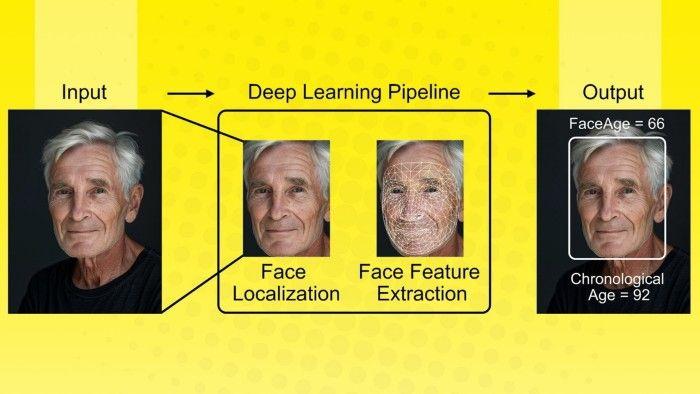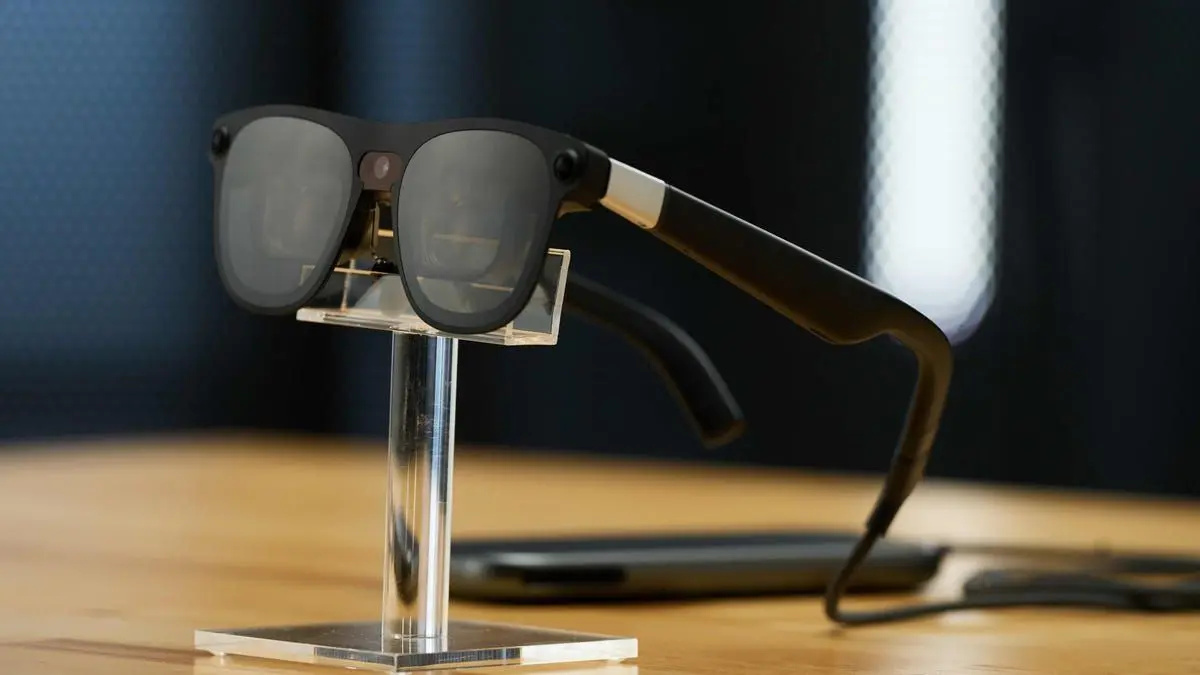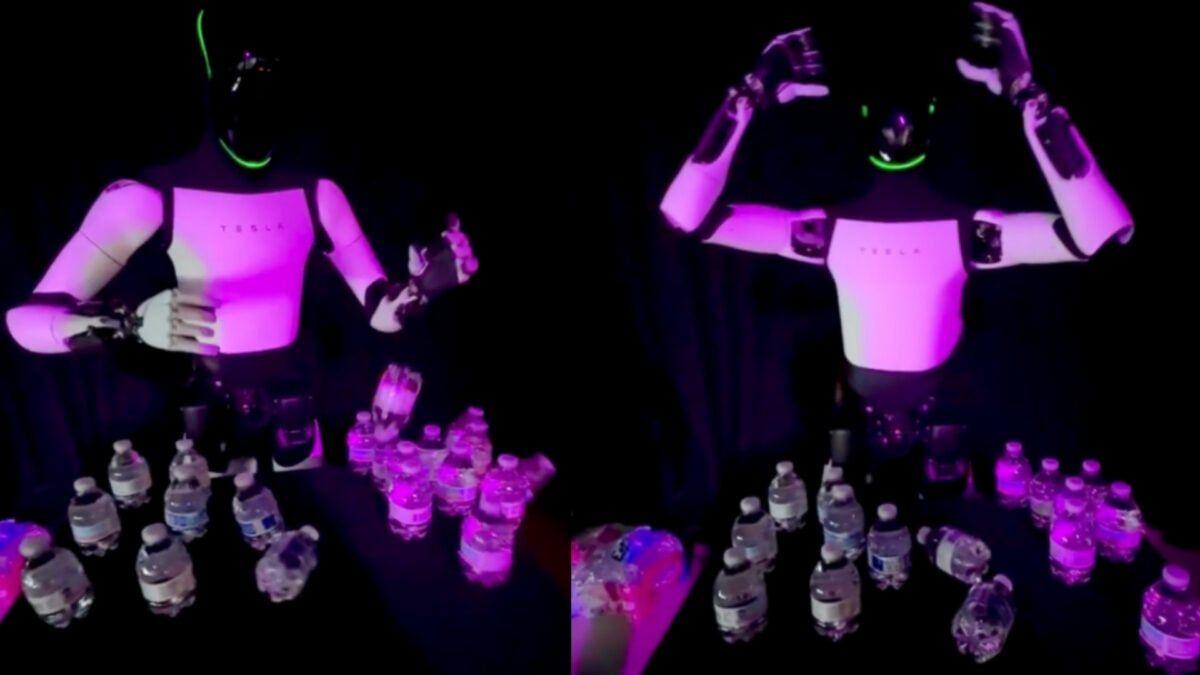AI Model Predicts Biological Age Using Steroid Pathways in Blood Samples
3 Sources
3 Sources
[1]
New AI model can estimate biological age using blood samples
Osaka UniversityMar 14 2025 We all know someone who seems to defy aging-people who look younger than their peers despite being the same age. What's their secret? Scientists at Osaka University (Japan) may have found a way to quantify this difference. By incorporating hormone (steroid) metabolism pathways into an AI-driven model, they have developed a new system to estimate a person's biological age a measure of how well their body has aged, rather than just counting the years since birth. Using just five drops of blood, this new method analyzes 22 key steroids and their interactions to provide a more precise health assessment. The team's breakthrough study, published in Science Advances, offers a potential step forward in personalized health management, allowing for earlier detection of age-related health risks and tailored interventions. Unlocking the body's aging signature Aging isn't just about the number of years we've lived-it's shaped by genetics, lifestyle, and environmental factors. Traditional methods for estimating biological age rely on broad biomarkers, such as DNA methylation or protein levels, but these approaches often overlook the intricate hormonal networks that regulate the body's internal balance. Our bodies rely on hormones to maintain homeostasis, so we thought, why not use these as key indicators of aging?" Dr. Qiuyi Wang, co-first author of the study To test this idea, the research team focused on steroid hormones, which play a crucial role in metabolism, immune function, and stress response. A new AI-powered model The team developed a deep neural network (DNN) model that incorporates steroid metabolism pathways, making it the first AI model to explicitly account for the interactions between different steroid molecules. Instead of looking at absolute steroid levels-which can vary widely between individuals-the model examines steroid ratios, providing a more personalized and accurate assessment of biological age. "Our approach reduces the noise caused by individual steroid level differences and allows the model to focus on meaningful patterns," explains Dr. Zi Wang, co-first and corresponding author of this work. The model was trained on blood samples from hundreds of individuals, revealing that biological age differences tend to widen as people get older-an effect the researchers liken to a river widening as it flows downstream. Key insights and implications One of the study's most striking findings involves cortisol, a steroid hormone commonly associated with stress. The researchers found that when cortisol levels doubled, biological age increased by approximately 1.5 times. This suggests that chronic stress could accelerate aging at a biochemical level, reinforcing the importance of stress management in maintaining long-term health. "Stress is often discussed in general terms, but our findings provide concrete evidence that it has a measurable impact on biological aging," says Professor Toshifumi Takao, a corresponding author and an expert in analytical chemistry and mass spectrometry. The researchers believe this AI-powered biological age model could pave the way for more personalized health monitoring. Future applications may include early disease detection, customized wellness programs, and even lifestyle recommendations tailored to slow down aging. Looking ahead While the study represents a significant step forward, the team acknowledges that biological aging is a complex process influenced by many factors beyond hormones. "This is just the beginning," says Dr. Z. Wang. "By expanding our dataset and incorporating additional biological markers, we hope to refine the model further and unlock deeper insights into the mechanisms of aging." With ongoing advancements in AI and biomedical research, the dream of accurately measuring-and even slowing-biological aging is becoming increasingly feasible. For now, though, the ability to assess one's "aging speed" with a simple blood test could mark a game-changing development in preventive healthcare. Osaka University Journal reference: Wang, Q., et al. (2025). Biological age prediction using a DNN model based on pathways of steroidogenesis. Science Advances. doi.org/10.1126/sciadv.adt2624.
[2]
AI predicts biological aging using steroid pathways
By Dr. Priyom Bose, Ph.D.Reviewed by Benedette Cuffari, M.Sc.Mar 19 2025 AI-powered model predicts biological aging through steroid pathways, highlighting key biomarkers like cortisol. Study: Biological age prediction using a DNN model based on pathways of steroidogenesis. Image Credit: Shutterstock AI Generator / Shutterstock.com A recent Science Advances study discusses a novel method to predict biological aging (BA) using a deep neural network (DNN) based on pathways of steroidogenesis. What is aging? Aging is a complex biological process that arises due to the accumulation of molecular and cellular damage that causes functional decline. As a result, aging increases the risk of many diseases including Parkinson's disease, Alzheimer's disease, and osteoporosis. Whereas chronological aging (CA) reflects the passage of time, BA provides insights into the biological processes involved in aging. Methods to measure biological aging Assessment of BA is highly complex, as it is influenced by both genetic and non-genetic factors. Available methods for measuring BA are often associated with inadequate predictive quality, as these approaches rely on phenotypic indicators, such as grip strength and lung capacity, which lack standardization and precision. Over the past several years, researchers have transitioned from conventional phenotypic indicators to more intrinsic measures, such as blood counts and biochemical tests, to assess physiological aging. However, these markers do not accurately reflect specific metabolic or physiological pathways that contribute to aging. Omics technologies including epigenomics and metabolomics have also been used to analyze aging at the molecular level and improve the accuracy of BA models. Although these methods can interpret DNA methylation and proteomics data, they are limited in their ability to identify specific biomarkers associated with metabolic pathways affected during aging. Modern machine learning techniques like random forests, support vector machines (SVMs), and DNN have also been used to measure complex biological processes associated with aging. Since DNN can handle high-dimensional data, they have been used to predict BA; however, these models are prone to overfitting, which can reduce their performance capabilities. About the study The current study developed a DNN model based on pathways of steroidogenesis to improve BA prediction accuracy. Steroids, which were quantified through liquid chromatography-tandem mass spectrometry (LC-MS/MS), were stratified into four groups based on sex and designation for training or independent validation. Data scaling techniques were used to address physiological and experimental variability. Unlike previous models, the current DNN model incorporates a custom-designed loss function that accounts for the progressive heterogeneity of aging. This DNN model is designed to incorporate biochemical processes within key steroid pathways, which significantly improves the model's biological interpretability. This study modeled BA using data from 100 healthy participants between 20 and 73 years of age, as well as a second validation cohort of 50 participants between 40 and 59 years of age. Study findings A validated method was used to quantify 22 steroids in 150 individuals. Of the 100 serum samples used for modeling, two were excluded due to issues attributed to a limit of quantitation (LOQ). Differences in estrone (E1) levels in female samples were likely due to differences in the menstruation cycle. The broader range of 7α-hydroxydehydroepiandrosterone (7-OH-DHEA) could be due to the inclusion of participants with diverse age groups. Other steroids considered for this model include tetrahydrocortisol (TH-COL), tetrahydrocorticosterone (THB), tetrahydrocortisone (TH-COR), 11-β-hydroxyandrosterone (11-OH-An), adrenosterone (AT), and tetrahydrodeoxycortisol (THS). For the current DNN modeling, demographic and physiological information for each participant including sex, CA, blood groups, smoking habits, and ethnicity were considered. After training the model on a well-structured dataset, the intrinsic relationship between specific hormones and physiological aging was examined. The current DNN model revealed how different steroids affect BA and identified significant sex-specific differences between female and male models. Thus, distinct metabolic pathways in each sex influence aging trajectories, with corticosteroid and sex hormone pathways involved in BA. Cortisol (COL), a steroid associated with stress, was identified as a significant biomarker of aging. The DNN model established a positive correlation between COL and BA, thus indicating that COL can be considered a biomarker of aging because of its involvement in processes such as gluconeogenesis and inflammation. The female model revealed that steroids like 17-OH-P4, COR, COS, and TH-COL positively influence BA, whereas BA among men is affected by pregnenolone and testosterone levels. As compared to non-smokers, only male smokers were associated with a more accelerated aging trajectory, which may be attributed to lower smoking frequency in females than males. Conclusions The current DNN model accurately captures the increasing heterogeneity of aging over time and complex biological processes influenced by steroidogenesis. The study findings indicate that steroid profiles, particularly COL, can be used as dynamic biomarkers to elucidate the dynamic aging process. In the future, this DNN model can be refined to leverage total cholesterol as a reference, which could preserve predictive accuracy in datasets with fewer steroid measurements. Importantly, this model must be trained with a diverse dataset that consider both environmental and behavioral factors while also examining how certain sex-specific metabolic pathways differ with aging. Journal reference: Wang, Q., Wang, Z., Mizuguchi, K., et al. (2025) Biological age prediction using a DNN model based on pathways of steroidogenesis. Science Advances. 11(4). doi:10.1126/sciadv.adt2624
[3]
AI-powered blood test can predict your true biological age - Earth.com
We all know someone who seems to be aging more slowly than others. They look younger, move with more energy, and seem healthier despite having the same chronological age as their peers. What makes them different? Scientists at Osaka University in Japan believe they may have found a way to measure this difference more accurately. Instead of relying solely on chronological age, their new method assesses biological age - the true measure of how well the body has aged. Using artificial intelligence (AI) and steroid metabolism pathways, the model provides a deeper look into aging at a biochemical level. Aging is influenced by a complex mix of genetics, lifestyle, and environmental factors. Traditional methods for estimating biological age rely on broad biomarkers such as DNA methylation or protein levels. However, these approaches often miss the intricate hormonal interactions that keep the body in balance. "Our bodies rely on hormones to maintain homeostasis, so we thought, why not use these as key indicators of aging?" said Dr. Qiuyi Wang, co-first author of the study. To explore this, the researchers focused on steroid hormones, which regulate metabolism, immune response, and stress levels. The team developed a deep neural network (DNN) model that incorporates steroid metabolism pathways. This AI-driven system is the first to examine how steroid hormones interact rather than just their individual levels. "Our approach reduces the noise caused by individual steroid level differences and allows the model to focus on meaningful patterns," explains Dr. Zi Wang, co-first author of this work. The model was trained using blood samples from hundreds of individuals. The findings suggest that biological age differences increase as people grow older, much like a river widening as it flows downstream. The researchers' method requires only five drops of blood. From this sample, they analyze 22 key steroids and their interactions to estimate biological age with greater precision. This advancement in technology opens doors for the early detection of age-related health risks and personalized interventions to slow down aging. One of the most significant discoveries in the study relates to cortisol, a hormone linked to stress. The team found that when cortisol levels doubled, biological age increased by approximately 1.5 times. "Stress is often discussed in general terms, but our findings provide concrete evidence that it has a measurable impact on biological aging," said Professor Toshifumi Takao, a corresponding author and an expert in analytical chemistry and mass spectrometry. This discovery reinforces the importance of stress management in maintaining long-term health. Chronic stress may speed up aging at a biochemical level, making it essential to prioritize mental well-being along with physical health. Scientists believe their AI-powered biological age model could transform how people understand and manage their health. Instead of relying on general guidelines, this tool might allow doctors to give advice tailored to each person's body and aging process. By analyzing hormone interactions, the model could help detect diseases before symptoms appear, making early treatment possible. The technology could also assist in designing wellness programs that fit an individual's needs, helping people choose the best diet, exercise, and lifestyle changes to slow down aging. In the future, this technology might make it easier to track aging speed and adjust health strategies accordingly. While this study represents a major step forward, the researchers acknowledge that biological aging is complex. "This is just the beginning," said Dr. Wang. "By expanding our dataset and incorporating additional biological markers, we hope to refine the model further and unlock deeper insights into the mechanisms of aging." Advancements in AI and biomedical research continue to bring us closer to understanding the process of aging at a deeper level. The ability to assess how quickly a person is aging with a simple blood test could completely transform preventive healthcare in the years to come. Like what you read? Subscribe to our newsletter for engaging articles, exclusive content, and the latest updates.
Share
Share
Copy Link
Researchers at Osaka University have developed an AI-powered model that can estimate a person's biological age using blood samples, focusing on steroid hormone pathways and their interactions.

AI-Powered Model Estimates Biological Age Through Steroid Analysis
Researchers at Osaka University in Japan have developed a groundbreaking artificial intelligence (AI) model that can estimate a person's biological age using blood samples. This innovative approach, which focuses on steroid hormone pathways, offers a more precise assessment of how well a person's body has aged compared to traditional chronological age measurements
1
.The Science Behind the Model
The team's study, published in Science Advances, utilizes a deep neural network (DNN) model that incorporates steroid metabolism pathways. This model analyzes 22 key steroids and their interactions from just five drops of blood, providing a comprehensive view of the aging process at a biochemical level
2
.Dr. Qiuyi Wang, co-first author of the study, explains the rationale: "Our bodies rely on hormones to maintain homeostasis, so we thought, why not use these as key indicators of aging?"
1
Key Findings and Implications
One of the most significant discoveries relates to cortisol, a hormone associated with stress. The research found that when cortisol levels doubled, biological age increased by approximately 1.5 times. This provides concrete evidence of stress's impact on biological aging, emphasizing the importance of stress management for long-term health
3
.The study also revealed sex-specific differences in aging trajectories:
- In females, steroids like 17-OH-P4, COR, COS, and TH-COL positively influence biological age.
- In males, pregnenolone and testosterone levels play a more significant role
2
.
Related Stories
Advantages Over Traditional Methods
Unlike previous approaches that rely on broad biomarkers such as DNA methylation or protein levels, this AI model examines the intricate hormonal networks that regulate the body's internal balance. By focusing on steroid ratios rather than absolute levels, the model provides a more personalized and accurate assessment of biological age
1
.Future Applications and Potential Impact
The researchers believe this AI-powered biological age model could revolutionize personalized health monitoring. Potential applications include:
- Early disease detection
- Customized wellness programs
- Lifestyle recommendations tailored to slow down aging
3
Dr. Zi Wang, co-first and corresponding author, emphasizes that this is just the beginning: "By expanding our dataset and incorporating additional biological markers, we hope to refine the model further and unlock deeper insights into the mechanisms of aging."
1
As AI and biomedical research continue to advance, the ability to accurately measure and potentially slow biological aging could mark a significant development in preventive healthcare, offering a more nuanced understanding of individual health beyond chronological age.
References
Summarized by
Navi
[1]
[2]
Related Stories
AI Model Revolutionizes Brain Aging Detection and Cognitive Decline Prediction
25 Feb 2025•Science and Research

AI Tool 'FaceAge' Predicts Biological Age and Cancer Outcomes from Facial Photos
09 May 2025•Science and Research

AI Models CpGPT and MethylGPT Revolutionize DNA Methylation Analysis for Aging and Disease Prediction
12 Nov 2024•Science and Research

Recent Highlights
1
OpenAI declares code red as Google's Gemini gains 200 million users in three months
Technology

2
DeepSeek releases open-source AI models that rival GPT-5 and Gemini at fraction of the cost
Technology

3
AI Chatbots Sway Voters More Effectively Than Traditional Political Ads, New Studies Reveal
Science and Research





